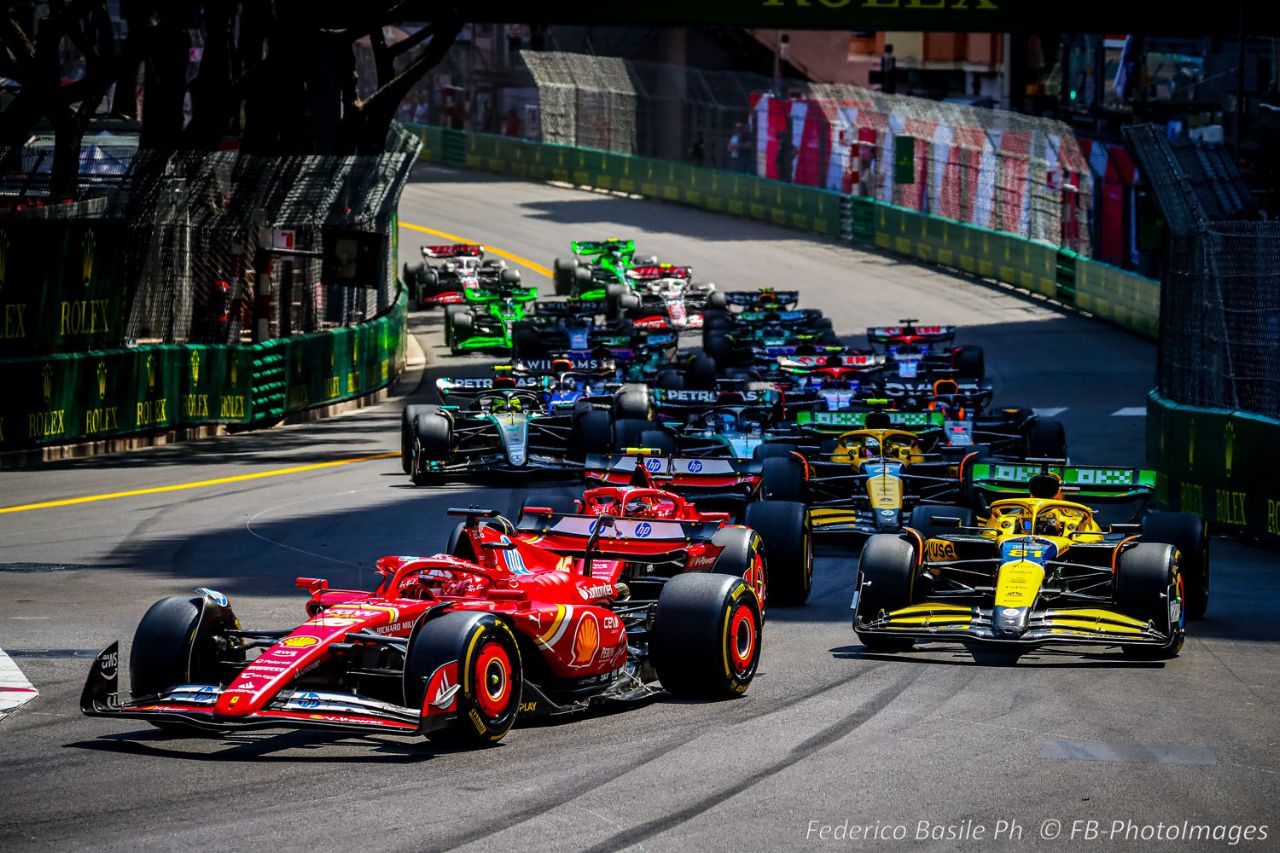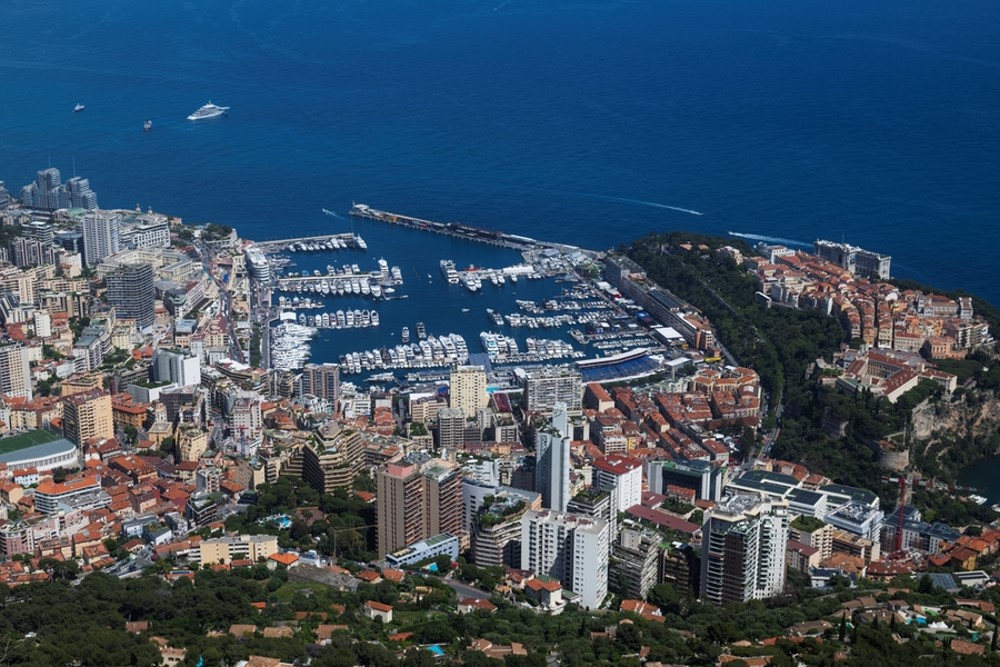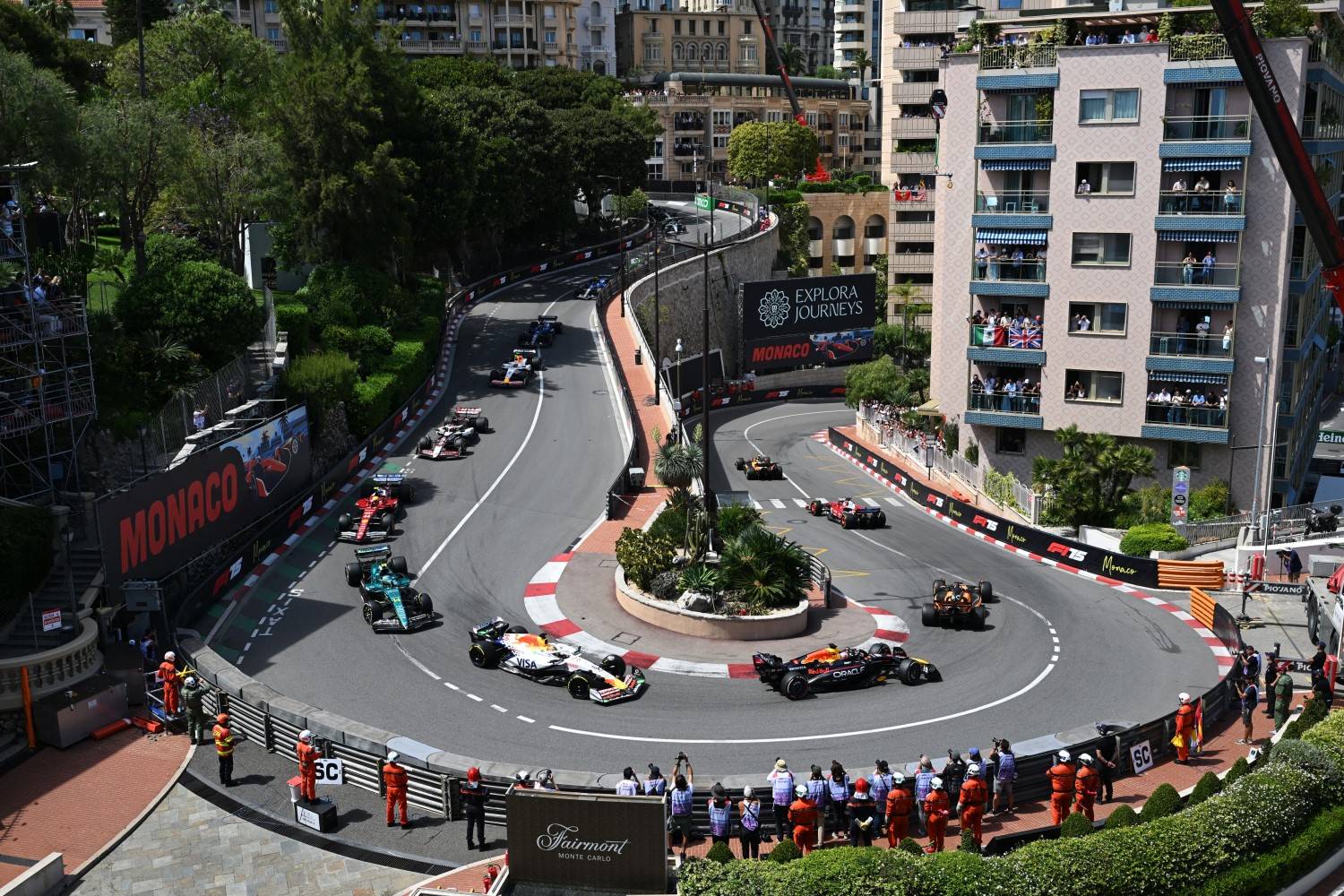What You Should Know Before Attending the Monaco Grand Prix
A trip to the Monaco Grand Prix isn’t your typical sports weekend. It’s one of the oldest Formula 1 races and also one of the most expensive and tightly organized events in Europe. If you’re flying in from the U.S., it’s important to plan everything ahead of time.

The Prestige and History of the Monaco Grand Prix
Since 1929, F1 cars have raced through the narrow streets of Monte Carlo. Every year in May, tiny Monaco turns into the center of the racing world. This event is part of the prestigious “Triple Crown” of motorsport, along with the 24 Hours of Le Mans and the famous Indy 500 in the United States. And starting from the very first World Championship in 1950, Monaco became one of the most anticipated events of the season.
The track here is special: only 3.337 kilometers long, running right through the city past the casino, along the port, and through the tunnel. The original circuit layout was built in just three months and was considered one of the most difficult in Formula 1 from the very beginning. After World War II, the race returned in 1955 and was canceled only once in 2020 due to COVID-19.
This race is so important because everything depends on the driver’s skill. There’s little space, sharp turns, and walls very close; even the smallest mistake means you’re out. You can’t just “go off and come back” here; there’s no room for error, and a single mistake often ends the race.
That’s why only the best have won here. For example, Graham Hill was nicknamed “Mr. Monaco” for five wins in the 1960s. The legendary Ayrton Senna won six times, including five in a row from 1989 to 1993. There were also surprise moments, like Olivier Panis’s unexpected victory in 1996. The rainy duel between Senna and Prost in 1984 is still remembered as one of the most thrilling races ever.
And in 2024, something truly historic happened: Charles Leclerc, who was born and raised in Monaco, won his home Grand Prix for the first time. Before him, the only Monegasque to do so was Louis Chiron, and that was way back in 1931. Leclerc’s victory became a real national celebration from fans in the stands to the Prince’s Palace itself.
Today, the Monaco Grand Prix is not just a race; it’s a full-on show. The race takes place right on the city streets. People watch from balconies, yachts, and hotel rooftops. During the weekend, stars, businesspeople, and fans from all over the world come here. Overtakes are rare, but that’s exactly what makes this race unique. Here, precision, strategy, and style matter most.
When the Race Happens
The Monaco Grand Prix traditionally takes place in late May or early June. In 2025, the race weekend was held from May 22 to 25. The event lasts several days: practice sessions take place on Thursday, qualifying on Saturday, and the main race starts on Sunday at 3 p.m. Before the start, spectators enjoy the drivers’ parade and the principality’s national anthem. There are also support races, Formula 2, Formula 3, and the Porsche Supercup.
Getting to Monaco from the U.S.
Traveling from the United States is easy with some planning. Monaco is one of only five countries without a commercial airport, so don’t count on direct flights. The nearest international airport is Nice Côte d’Azur (NCE) in France, located about 30 kilometers from Monaco. You can reach it from most major U.S. cities with a layover in Paris, London, Frankfurt, or Amsterdam.
There are several convenient ways to travel from Nice to Monaco. The most affordable and practical option is the train: the trip from Nice-Ville station to Monaco-Monte-Carlo takes about 25 minutes and costs less than $10. Trains run frequently, even during the Grand Prix weekend. You can also take an airport shuttle bus, but it usually takes longer due to road closures. Taxis and private transfers are available, though prices and travel times can increase on race days.
For those who value comfort and speed, a helicopter transfer is the fastest option. The flight from Nice to Monaco takes about seven minutes. Companies like Monacair and Héli Air Monaco provide this service, with prices starting at around €200 (≈$235) per person.
U.S. citizens do not need a visa to enter France or Monaco for stays of up to 90 days under the Schengen Agreement. Don’t forget that your passport must be valid for at least six months beyond your planned departure date. Before booking your flight, check the latest entry requirements on the official website travel.state.gov.
Rules, Etiquette, and Local Habits You Should Know Before Going
During the Monaco Grand Prix, strict security rules are in place. Every spectator must have a ticket and a photo ID; without them, entry is not allowed. Bags are checked at the entrance, and certain items are prohibited: glass bottles, large bags, drones, tripods, and, of course, any kind of weapon. Police and event staff have the right to deny entry to anyone who breaks the rules. The full list of restrictions is published annually on the Automobile Club of Monaco’s (ACM) official website.
It’s also important to follow proper behavior rules. In Monaco, people value respect, neatness, and punctuality. Arrive on time, stay in your assigned area, and follow staff instructions. Do not climb over barriers or block walkways. Dress simply but neatly in VIP areas; an “elegant casual” dress code usually applies. And remember, Monaco is not only a racetrack but also a residential city, so calm and respectful behavior is especially important here.
Tickets and the Best Viewing Spots
To get the most out of the race weekend, it’s important to choose your viewing spot in advance. There are several options: grandstands, terraces, yachts, or a hillside with a panoramic view. It all depends on your budget and what matters most to you: being close to the track, enjoying comfort, or soaking up the atmosphere.
- Grandstands. Each year, temporary stands are installed along the circuit, and prices vary widely from €45 (≈$53) on Friday to €800 (≈$935) on race day. The best spots are considered to be Grandstand K, overlooking the harbor and the Piscine section; Grandstand T, facing the pit lane and podium; and Grandstand V, located at the La Rascasse corner, where overtakes and key moments often happen.
- VIP terraces and lounges. Hotels and apartments offer packages that include access to private balconies, catering, and open bars. For example, the terraces of Hôtel de Paris and Ermanno Palace provide some of the best views of the starting grid and the tunnel exit. Prices start from several thousand euros, but the experience is well worth it.
- Yachts in the harbor. This is one of the most iconic images of the Monaco Grand Prix. Most yachts are privately owned, but agencies sell VIP tickets with full service and a direct view of the Piscine section. Prices start from several thousand euros, and the atmosphere combines racing excitement with a seaside party vibe.
- Le Rocher zone. This is a hillside near the Oceanographic Museum that offers a panoramic view of the circuit. Tickets start at €180 (≈$210), and since there are no seats, fans arrive early in the morning to claim good spots.
Tickets are officially sold by the Automobile Club de Monaco, usually starting in the fall. They can be purchased on the ACM website or through official partners monacograndprixticket.com and Gootickets. Prices vary depending on the stand and day, but popular spots sell out quickly, so it’s best not to wait until the last minute.
Where to Stay During the Grand Prix
There’s a very limited selection of hotels in Monaco, and during the Grand Prix, they sell out within days. To avoid problems with accommodation, it’s best to book early. Many fans reserve rooms almost a year in advance, right after Formula 1 tickets go on sale.
Staying in the center of Monaco can be an unforgettable experience, but be prepared for higher expenses. Hotels like Hôtel de Paris, Hôtel Hermitage, and Monte-Carlo Bay offer VIP packages with access to prime race views, but require a minimum stay of three to four nights. Prices during this period can reach €10,000 (≈$11,700) per night. Other popular options include Fairmont Monte-Carlo, overlooking the iconic corner, Le Méridien Beach Plaza with a private beach, and Hôtel Métropole Monte-Carlo, located next to the casino.
For a more affordable stay, consider nearby cities. Nice is just 20 minutes away by train and offers a wide range of options from hostels to five-star hotels, with rooms in quieter areas starting at €150 (≈$175). Menton, a charming seaside town near the Italian border, is only 10 minutes away and has rooms from €118 (≈$137) per night with breakfast included. Italian cities like Ventimiglia and Sanremo, 20–60 minutes away, are even cheaper.
Airbnb rentals are also in high demand during the Grand Prix. In Monaco itself, listings are limited, but nearby areas such as Beausoleil, Cap-d’Ail, and Roquebrune offer private apartments. Prices can skyrocket during the event. A flat that usually costs €100 (≈$116) per night can go for €1,000 (≈$1,167) during race weekend. In Nice, rental prices remain lower, with studios available for €80–100 (≈$94–117) per night. It’s best to book early and check cancellation terms carefully.
Getting Around Monaco and Enjoying Race Weekend Comfortably
After arriving in Monaco, the main challenge is getting around the city. During the Grand Prix, many streets are closed, and heavy crowds make movement difficult. The most reliable way to get around is on foot. Distances are short, but the city is hilly, so you’ll need to walk up and down stairs. Comfortable shoes are a must.

Plan your routes. You can use the website or app of the Compagnie des Autobus de Monaco (CAM) for that. Trains between Monaco and nearby cities, such as Nice, continue to run, but stations are often crowded.
Buses are an inexpensive way to get around, but they often face delays because of traffic. This option works best for those staying nearby, such as in Beausoleil or Cap-d’Ail. During the Grand Prix, free city buses operate within Monaco to connect key areas.
Taxis and car-sharing services offer comfort but not speed. A trip from Nice or the airport can take up to two hours, especially on Sunday when traffic is heaviest.
Bring only the essentials: your passport, ticket, phone, sunscreen, and a refillable water bottle. Avoid large bags, as they are inspected at entry points, which can slow things down. The weather on the coast can change quickly, so it’s a good idea to have a light poncho or jacket in case of rain.
Do not try to cross the track or climb over barriers. These areas are secured and closely monitored. Follow the instructions of event staff; they are well-trained and speak several languages. Along the track, there are medical stations and information points where you can get assistance or ask for directions.
What to See and Do in Monaco Beyond the Grand Prix
If you have some free time between races or before your flight, use it to explore Monaco. The principality is small, but there’s plenty to see.
Start with the Prince’s Palace in the Old Town, where the changing of the guard takes place at 11:55 and is worth watching. Nearby is the Oceanographic Museum, one of the best in Europe, with a unique collection dedicated to marine science and ecology. After that, take a walk to Casino Square and admire the Belle Époque architecture. If you want to go inside the casino, don’t forget your passport and follow the dress code.
Nature lovers should visit the Japanese Garden near the Larvotto area or the Exotic Garden, which offers a beautiful view of the sea. And if you prefer a quieter break, take a walk along the coastal path to Fontvieille, which offers some of the best views of the harbor.
Food is an essential part of the experience. Restaurants in Monaco are generally expensive, but just across the border in France, you can find excellent food for much less. In Nice, for example, you can enjoy great meals at a fraction of Monaco’s prices. Be sure to try local dishes like crispy socca, Niçoise salad, and fresh seafood. It’s best to book popular restaurants in advance, as during the Grand Prix, tables fill up quickly.
Monte Carlo is the center of local nightlife events. Bars and clubs stay open late, especially during race weekend. Keep in mind that most venues have an entry fee and a dress code. Always carry an ID and follow local rules.
If you have another day to spare, take a short trip along the French Riviera. From Monaco, you can easily reach Èze, Villefranche-sur-Mer, or Cannes by train; the ride takes less than an hour. Each of these towns has its own charm and gives you a taste of the Riviera’s true atmosphere.
Final Tips for Getting the Most Out of the Event
The Monaco Grand Prix is one of those events you have to see at least once in your life. Here are a few proven tips from experienced spectators who know how to make the weekend comfortable and stress-free.
- Plan your budget. To keep the trip from turning into a series of compromises like “have lunch or buy a cap,” it’s better to estimate your expenses in advance and add a bit extra just in case. If you don’t want to limit yourself to small things, you can cover your trip expenses with a reliable short-term loan and simply enjoy the weekend. The track, fan zone, evening events — it’s easy to get carried away and spend more than expected, so prepare a backup fund in advance.
- Arrive early. On race day, the gates open around 7:30–8:00 a.m., and by 10:00, the grandstands are almost full. It’s better to take your seat early, relax, watch the support races, and enjoy the atmosphere rather than stand in line and search for your entrance. Plus, transportation runs more smoothly in the morning.
- Don’t bring too much. Bags are inspected at the entrance, and large backpacks, glass items, sharp objects, and drones are prohibited. You can bring food and water, which helps save money. Prices at the track are high: a sandwich costs about €10 (≈$12) and a bottle of water about €5 (≈$6). Pack a light snack, some fruit, and a refillable bottle.
- Dress comfortably. In late May, Monaco is usually warm around +20–25 °C (68–77 °F). The sun is bright, and most grandstands have no shade, so don’t forget a hat, sunglasses, and sunscreen. Short rain showers are possible, so a light poncho will help more than an umbrella. Choose practical shoes without heels. Monaco is hilly, and you’ll walk a lot.
- Earplugs are a must. Even modern Formula 1 cars are loud up to 130 dB. To protect your hearing, especially for children, bring earplugs or noise-canceling headphones.
- Stay hydrated and eat well. It’s easy to overheat under the Mediterranean sun, so remember to drink regularly. There are water refill stations around the track. During the Grand Prix, restaurant prices rise sharply, and set menus at popular places can start from €300 (≈$325). To save money, you can eat in Nice or have a picnic on Larvotto Beach.
Love auto racing, spectacular events, and a one-of-a-kind atmosphere? The Monaco Grand Prix delivers it all in full; no one walks away unimpressed.
